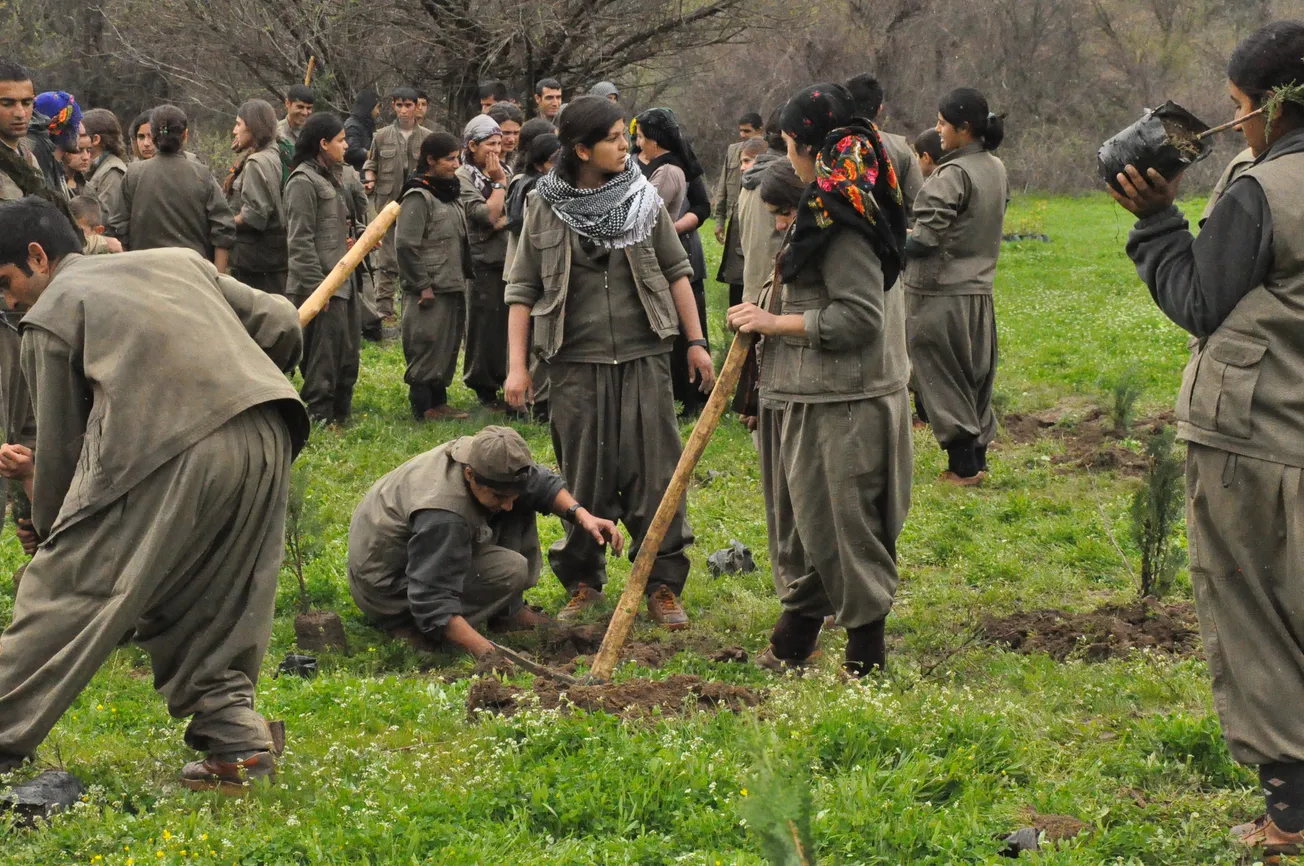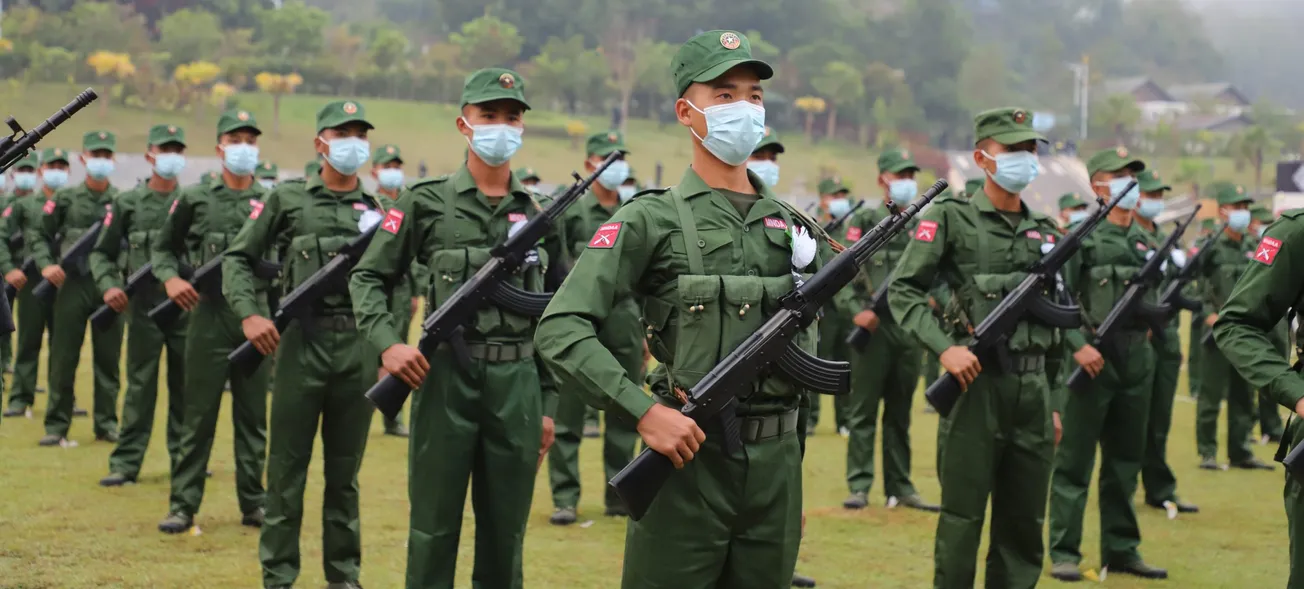Overview
The Ta'ang National Liberation Army (TNLA) is an ethnic armed organization operating primarily in northern Shan State, Myanmar. Established in 2009 as the armed wing of the Palaung State Liberation Front (PSLF), the TNLA fights for greater autonomy and rights for the Ta'ang (Palaung) people within the federal system of Myanmar. With an estimated strength of tens of thousands of troops, the TNLA has emerged as one of the most formidable ethnic armed groups in Myanmar's complex conflict landscape.
The TNLA's significance has grown substantially since the 2021 military coup in Myanmar. As part of the Three Brotherhood Alliance, alongside the Myanmar National Democratic Alliance Army (MNDAA) and the Arakan Army (AA), the TNLA has played a crucial role in major offensives against the military junta, most notably Operation 1027 in late 2023. This operation resulted in significant territorial gains for the alliance, including the capture of several towns and military installations in northern Shan State.
The group adheres to a political ideology that blends ethno-nationalism with calls for democracy and federalism. The TNLA is known for its strict anti-drug policies and efforts to establish parallel governance structures in areas under its control. As of early 2025, the TNLA controls a significant portion of northern Shan State, including 15 out of 17 townships in the region, marking a dramatic shift in the balance of power in Myanmar's ongoing civil conflict.
History
- Origins and Formation (2009-2011): The TNLA was officially formed in October 2009 during the 3rd Congress of the Palaung State Liberation Front (PSLF). Its creation was announced by PSLF leaders Tar Aik Bong and Tar Bone Kyaw, establishing the TNLA as the armed wing of the political organization. This move came after years of Palaung activism and earlier armed resistance movements dating back to the 1960s.
- Early Operations and Growth (2011-2015): The TNLA's armed offensive began on December 31, 2011, when they crossed the Shweli (Ruli) River and re-entered the Ta'ang region. Initial clashes with the Myanmar military started on August 18, 2012. During this period, the TNLA focused on building up its forces and establishing a presence in Ta'ang-populated areas of northern Shan State.
- Expansion and Alliance Building (2016-2020): In 2016, the TNLA joined the Northern Alliance alongside the Arakan Army (AA), the Kachin Independence Army (KIA), and the Myanmar National Democratic Alliance Army (MNDAA). This alliance strengthened the TNLA's position and operational capabilities. In 2019, the TNLA, AA, and MNDAA formed the Three Brotherhood Alliance, further consolidating their cooperation.
- Post-Coup Era and Major Offensives (2021-Present): Following the military coup on February 1, 2021, the TNLA initially avoided direct conflict with junta troops, focusing instead on consolidating its governance capacities in northern Shan State. However, the group provided covert support to anti-junta forces and engaged indirectly with new opposition political institutions. The TNLA's most significant military action came with Operation 1027, launched on October 27, 2023, in coordination with its Brotherhood Alliance partners. This offensive resulted in the capture of numerous towns and military installations, including the Myanmar military's Western Command headquarters in Ann Township. By early 2025, the TNLA had gained control over 15 out of 17 townships in its operational area.
Key Characteristics
- Ethno-nationalist Ideology: The TNLA primarily represents the Ta'ang (Palaung) ethnic group, advocating for their rights and autonomy within Myanmar.
- Political-Military Structure: The TNLA functions as the armed wing of the PSLF, with a close integration between political and military leadership.
- Anti-Drug Stance: The group is known for its strong opposition to drug trade and use, actively destroying poppy fields and drug production facilities in its areas of control.
- Governance Aspirations: In controlled territories, the TNLA has established parallel governance structures, including administrative, judicial, and law enforcement systems.
- Alliance Building: The TNLA has demonstrated a capacity to form and maintain alliances with other ethnic armed organizations and resistance groups.
- Adaptability: The group has shown remarkable resilience and ability to adapt its strategies in response to changing political and military circumstances.
Key People/Actors
- General Tar Aik Bong: The current Chairman of the PSLF/TNLA and a key figure in shaping the organization's strategy.
- Brigadier General Tar Bone Kyaw: The General Secretary of the PSLF/TNLA, known for his extensive experience and strong external relations.
- Lieutenant General Tar Jok Jar: Vice-chairman-1 of the PSLF/TNLA formerly served as the private secretary of a previous chairman.
- Major General Tar Khu Lang: Vice-Chairman-2, known for his extensive experience and strong connections with younger members.
- Brigadier General Tar Om Tamaung: Joint General Secretary-1, recognized for his eloquence and humor.
- Colonel Tar Parn La: Joint General Secretary-2 and Head of External Relations for the TNLA.
Key Capabilities and Tactics
- Guerrilla Warfare: The TNLA excels in hit-and-run tactics and ambushes, leveraging its knowledge of the difficult terrain in northern Shan State.
- Conventional Military Operations: In recent years, the TNLA has demonstrated increased capacity for more conventional military operations, including the capture of major towns and military bases.
- Alliance Warfare: As part of the Three Brotherhood Alliance, the TNLA has coordinated its operations with other ethnic armed groups, enhancing its effectiveness against the Myanmar military.
- Territorial Control: The group has shown the ability to capture and hold significant territory, including urban areas and key military installations.
- Resource Control: The TNLA derives significant funding from control over natural resources in its territory, particularly in border regions.
- Media and Propaganda: The group employs sophisticated media strategies to promote its cause and maintain support among the Ta'ang population.
- Cross-border Operations: The TNLA's proximity to the Chinese border allows for strategic maneuvering and potential access to external support.
Outlook
As of early 2025, the TNLA's position in Myanmar's complex conflict landscape appears stronger than ever:
- Territorial Expansion: With control over 15 out of 17 townships in its operational area, including key military installations, the TNLA has established itself as the dominant force in northern Shan State.
- Military Capabilities: The capture of significant military assets and territory during Operation 1027 demonstrates the TNLA's growing military prowess and poses a significant challenge to the junta's control.
- Regional Implications: The TNLA's control over strategic areas in northern Shan State could have far-reaching implications for major infrastructure projects and regional stability.
- Alliance Dynamics: The success of the Three Brotherhood Alliance has strengthened the TNLA's position, but maintaining unity among diverse armed groups may pose challenges in the future.
- International Attention: The TNLA's military successes have drawn increased international attention to the situation in Shan State, potentially leading to greater diplomatic engagement.
- Governance Challenges: As the TNLA consolidates control over new territories, its ability to govern effectively and provide services will be crucial for maintaining popular support.
- Peace Process Uncertainties: While the TNLA has made significant military gains, the path to a lasting political solution remains uncertain. Its demands for autonomy or federalism will likely be central to any future negotiations.
The future trajectory of the TNLA and its conflict with the Myanmar military will likely depend on several factors, including its ability to maintain military momentum, govern effectively in controlled areas, and navigate complex regional and international dynamics. As the situation in Myanmar continues to evolve, the TNLA's actions and strategic decisions will play a crucial role in shaping the country's future political landscape and the prospects for peace and federalism.










